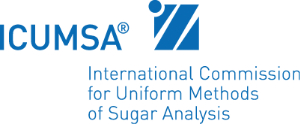Instruction to Author
1 General
Sugar Industry / Zuckerindustrie accepts original papers (research reports), review articles, and short communications on all the aspects implied by the journals title and subtitle.
2 Submission of manuscript
Manuscripts are to be submitted to the Editorial Office: Verlag Dr. Albert Bartens Lückhoffstr. 16 14129 Berlin Germany Tel: +49(0)30/803 56 78 Fax: +49(0)30/803 20 49 e-mail: info@bartens.com
3 Language
Papers must be written in English or German. Authors who are less familiar with these languages should seek assistance from proficient colleagues in order to produce manuscripts that are grammatically and linguistically correct.
4 Organization of manuscript
Authors are requested to adhere to the rules given below and to follow the examples precisely.
4.1 Typing
Manuscripts should be sent as Microsoft word file.
4.2 Size of manuscript
Original papers should not exceed 30,000 characters. In addition up to 15 figures, tables or schemes may be included.
4.3 Introductory material
The first page of manuscript should contain the following items in the sequence given: a) The title of the paper with as many meaningful terms as possible. b) The names of all authors with at least one first name spelled out for every author. Moreover, each author’s last name is to be followed by an asterisk (or similar symbol) that refers to a footnote reporting the author’s address. c) A footnote that repeats the names of all authors and their academic titles and reports the author’s affiliations with complete postal private addresses. If authors are at different addresses, several footnotes (one per address) are required.
4.4 Abstract
The second page of manuscript should start with an abstract that summarizes the contents of the paper. Its length should not exceed 15 lines. The abstract should be as informative as possible. An extended repetition of the paper’s title is not considered to be an abstract.
4.5 Division of text
Manuscripts should be divided into sections and subsections by headings and subheadings which are numbered as in these Instructions. Underlining should be avoided strictly.
4.6 References
→ download citation template for Citavi
Responsibility for the accuracy of references rests with the author(s). References are to be limited in number to those absolutely necessary. Frequently, collective reference to older publications can be made by citing a review in which these publications are listed. References are to be numbered sequentially in the order in which they are cited in the text. The numbers should be enclosed in square brackets: as was shown by Brown [1], Johnson [2, 3] and Smith [4, 7]. References are to be collected in numerical order at the end of the manuscript. They should correspond in detail to the following examples:
4.6.1 Journal articles
[1] Lee, J.E.; Sinclair, P. (1984): Characterization of Starch from Aged Bread. Cereal Chem. 61, 313-317, DOI:10.1016/……..
Titles of journals are to be abbreviated according to the practice of Chemical Abstracts. (All authors names in italics)
4.6.2 Unpublished work
Papers that are unpublished but have been submitted to a journal for publication may be cited with the journal’s name followed by submitted or “in press”. However, this practice is acceptable only, if the author has at least received galley proofs of his paper. In all other cases reference must be made to “unpublished work” or “personal communication”.
4.6.3 Books
[2] Banks, W.; Greenwood, C.T. (1975): Starch and its Components: Edinburgh University Press, Edinburgh
4.6.4 Chapters from multi-author books
[3] Mercier, C. (1978): Extrusion Cooking of Starch, in: Polysaccharides in Food. Blanshard, J.M.V.; Mitchell, J.R. (Eds.): Butterworths, London 153-170
4.6.5 Theses
[4] Linstead, J.B. (1962): Ph. D. Thesis, University of Glasgow
4.6.6 Patents
[5] Miller, B.O. (1952): U. S. Pat. 2542356, Dow Chemical Comp., Abstr. 51 (1961) 2870
4.7 Footnotes
Footnotes to the text are to be avoided. For footnotes to tables, see Section 4.8.
4.8 Tables
Every table must be referred to in the text. Tables are to be numbered with Arabic numerals in the sequence in which they occur. Every table must begin with a caption that starts with, for example, Table 3. The caption must explain in detail the contents of the table. As the table itself it must be written so that it can be read and understood without reference to the text. Every column and every line of a table must be labeled unambiguously and indicate units wherever data are reported. References to a table are to be handled in the same way as references to the text (see Section 4.6). Footnotes to a table should be indicated by lower-case letters in parentheses and typed directly under the table.
4.9 Figures
4.9.1 General remarks
Every figure must be referred to in the text. All figures are to be numbered with Arabic numerals in the sequence in which they are cited. Every figure must be accompanied by a legend that begins with, for example, Figure 5. The legend must explain in detail the contents of the figure and – as the figure itself – must be comprehensible without reference to the text. The figures and diagrams should have should be of sufficient quality for printing (Pixel files 300 dpi at print format ). Numbers, letters and symbols inscribed must be large enough to be still 1.5 mm high after the figure has been reduced to the printing format. Please send figures in an extra data file (e.g. *.tiff or *.jpeg).
4.10 Quantities, units, abbreviations, nomenclature
Only SI quantities and units are to be used. If data with non-SI units are to be reported, they should be put in parentheses behind the corresponding data with SI units. Symbols and abbreviations used to represent variables, constants, quantities, properties etc. must be defined in the text at their first occurrence. All nomenclature should follow established rules wherever these are available.
4.11 Acknowledgements
Acknowledgements financial support, advice or other kinds of assistance but no advertising propaganda should be made at the end of the text before Bibliography under the heading “Acknowledgements”.
